How to cook dried shiitake mushrooms
Dried shiitake mushrooms are a must-have pantry staple in many Asian cuisines, known for their rich, earthy flavor and meaty texture that can transform any dish from ordinary to extraordinary. But what to do with dried mushrooms and how to use and prepare them for cooking can be a bit tricky.
In this guide, I break down the steps to perfectly rehydrate your dried shiitake mushrooms. You’ll also learn how to select and where to buy the best shiitake dry mushrooms and discover recipes you can use to showcase their unique flavor.
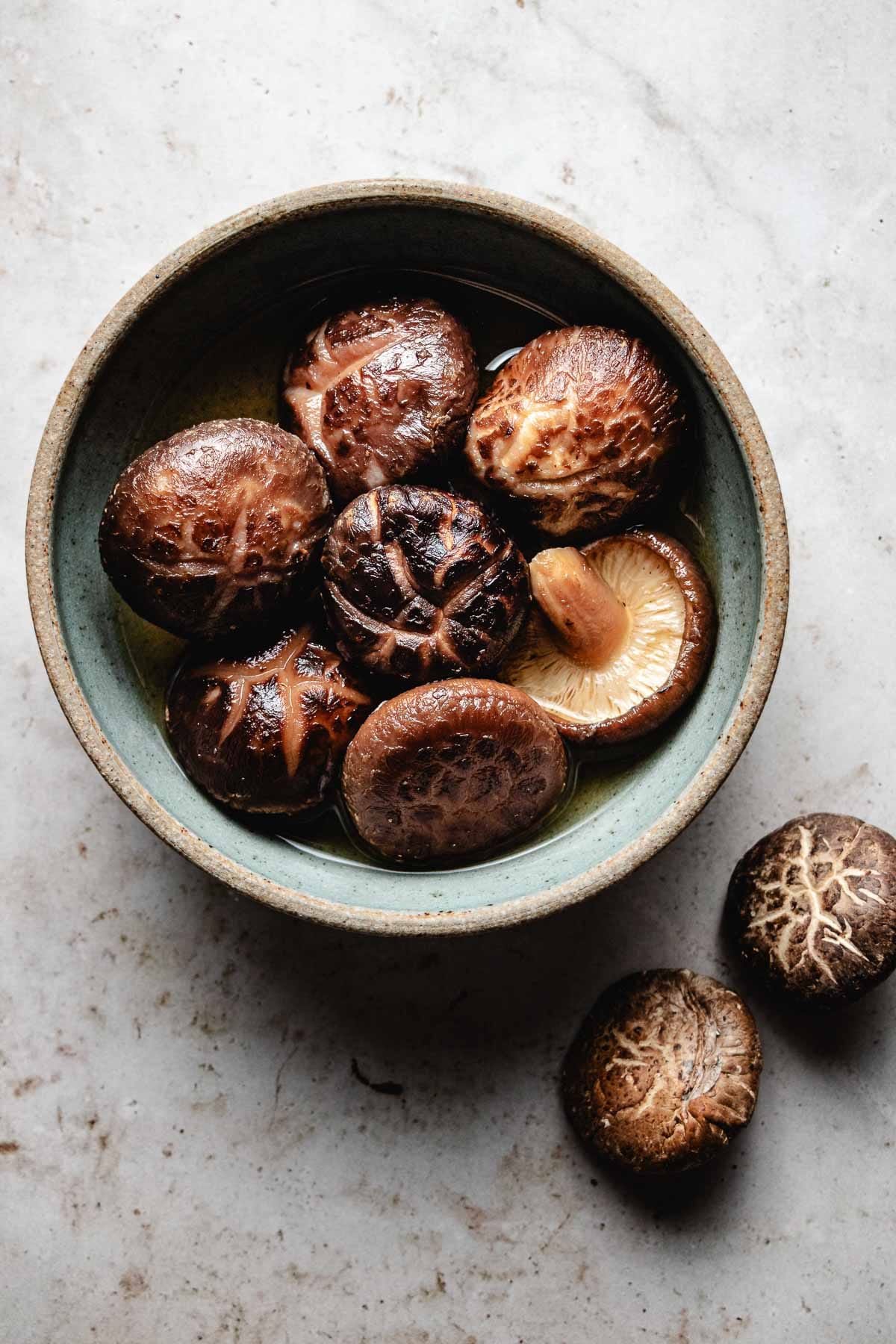
Why use dried shiitake mushrooms
Dried shiitake mushrooms have a deeper concentrated umami flavor than fresh shiitake. This is because the dehydration process breaks down the cells and causes enzymes to activate, enhancing the flavor.
Think of it like sun-dried tomatoes, apricots, prunes, and dates – all of these have a more concentrated flavor than their fresh counterparts. It’s the same with dried shiitake mushrooms.
Once rehydrated, the enzymes release their concentrated flavors, giving the mushrooms an extra punch of taste – a meatier texture, a woodsy and savory profile, and a richness in natural monosodium glutamate (MSG). This natural MSG is what gives dishes that irresistible savory depth.
Additionally, the soaking liquid from the mushrooms is a treasure in itself. It serves as an excellent base for vegetarian and vegan stock, enriching plant-based Asian dishes with a robust and savory essence.
This soaking liquid is a must-have ingredient in your kitchen, particularly for those mouth-watering plant-based recipes
Ingredients and tools to rehydrate dried shiitake
Reconstituting dried mushrooms is way simpler than you might think, so there’s no need to feel intimidated! Once you’ve got the hang of it, you’ll be adding oodles of flavor to your home cooking in no time. Here’s how to rehydrate shiitake mushrooms:
Ingredients:
- Whole Dried Shiitake Mushrooms: When picking shiitake mushrooms, look for caps with lots of cracks (also known as mushroom fissures) and thick, dome-shaped caps. These features are signs of a quality mushroom. (For more tips on selecting the best dried shiitake, check out the section below.)
- Room Temperature Water: Just plain old water is the best choice for rehydrating your shiitake. Avoid using chicken broth or other flavored stocks, as these can interfere with the mushroom’s natural flavors and may even prevent proper rehydration.
Tools:
- A Large Bowl or Container: You’ll need something big enough to submerge all your mushrooms and hold all the soaking liquid. A large soup container or Tupperware works perfectly.
- A Sieve or Strainer: This tool is super handy for straining the rehydrated shiitake. It helps separate any grit from the pure mushroom liquid, ensuring you only get the good stuff.
- A Knife and Chopping Board: Once your mushrooms are all plump and ready, you’ll need these to slice them up before they hit the pan.
How to select the best dried shiitake
Picking out the right dried shiitake mushrooms can sometimes feel like a puzzle, but don’t worry—I’ve got some family secrets to share that will help you pick the best ones without breaking the bank!
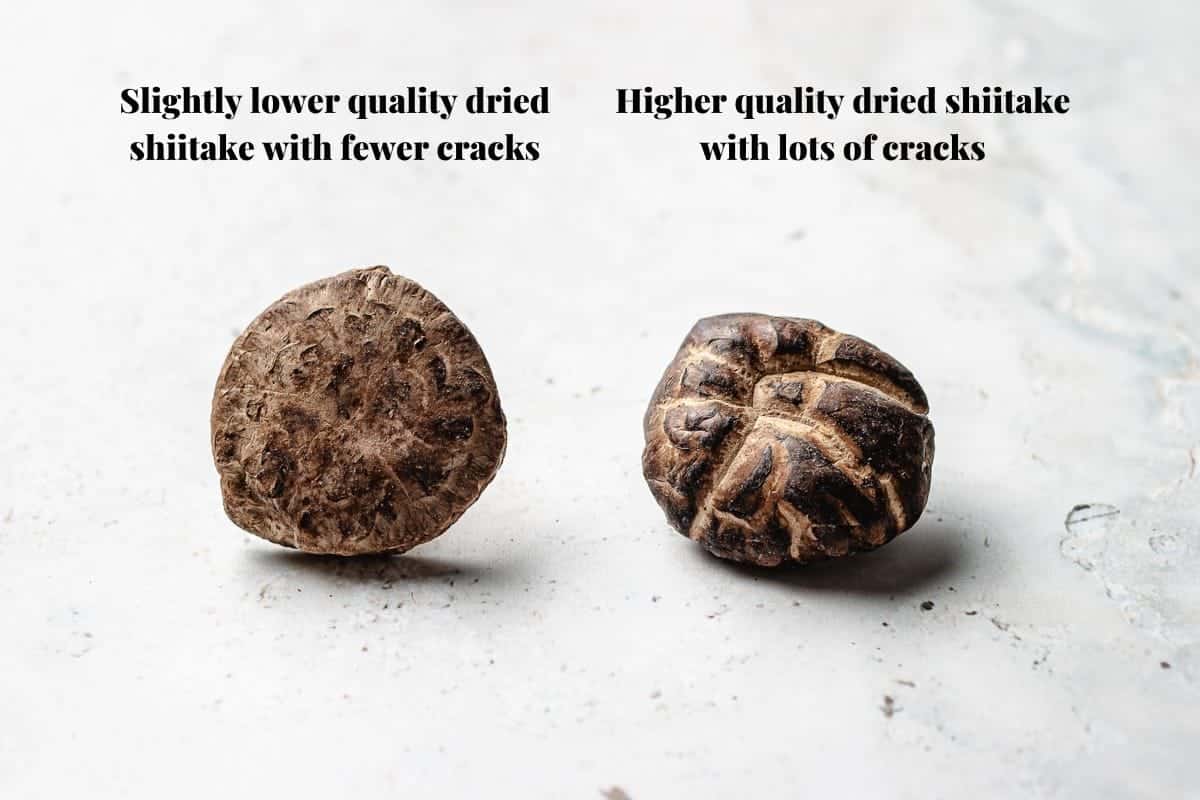
- Go for Whole Dried Shiitake: While pre-sliced mushrooms might seem convenient, they often lack flavor. It’s best to stick with whole dried shiitake for that full, rich taste.
- High-Quality Shiitake – 冬菇 or 花菇 (Donko in Japanese) or white flower mushrooms: These are the pricier ones, but they’re worth it. Look for mushrooms with lots of cracks (known as fissures) on the caps. More fissures mean the mushrooms will be extra thick, meaty, and juicy once they’re rehydrated. These are the ones that truly bring your dishes to life.
- Good Quality Shiitake – 香菇 (Koshin in Japanese): These are a bit more budget-friendly and still great for cooking. They’re fragrant, but their caps have fewer cracks and are smoother. Once rehydrated, they’ll be thinner and less meaty than their pricier counterparts but still packed with flavor.
Where to buy
If you’re on the hunt for dried shiitake mushrooms, the best places to check are local Chinese, Korean, or Japanese grocery stores. Places like the Hong Kong market in New York, H-Mart, or Japanese Mitsuwa markets are fantastic because they offer a wide variety of brands and price ranges, allowing you to find exactly what suits your preferences and needs.
I haven’t had much luck with Western grocery stores when it comes to dried shiitake. They tend to be pricier, and often, the mushroom caps are disappointingly thin. Remember, thicker caps mean more fragrance and a meatier texture once rehydrated – that’s what you’re looking for!
When it comes to price, supreme quality shiitake can be quite expensive, especially since they’re often used as gifts during Chinese New Year and other celebrations. However, for everyday cooking, you don’t need to go all out. Look for mid-range priced dried shiitake mushrooms, about $15-20 per pound. This price range usually offers good quality without costing a fortune.
Also, pay attention to the packaging. The best shiitake mushrooms are typically vacuum-sealed. This keeps them fresh and clean. Look for packages where the mushrooms are free of dirt and nicely presented – it’s a sign of quality and care.
How to prepare dried shiitake mushrooms
Getting your dehydrated shiitake mushrooms ready for cooking is a breeze. Here’s a step-by-step guide to rehydrate them, making them plump, juicy, and perfectly textured for your dishes.
I. Cleaning shiitake dry mushroom
If you’ve chosen good quality mushrooms, they’re likely packed in vacuum-sealed packages, keeping them clean and dust-free. So, no need to rinse or wash them before soaking.
II. How long to soak dried shiitake mushrooms
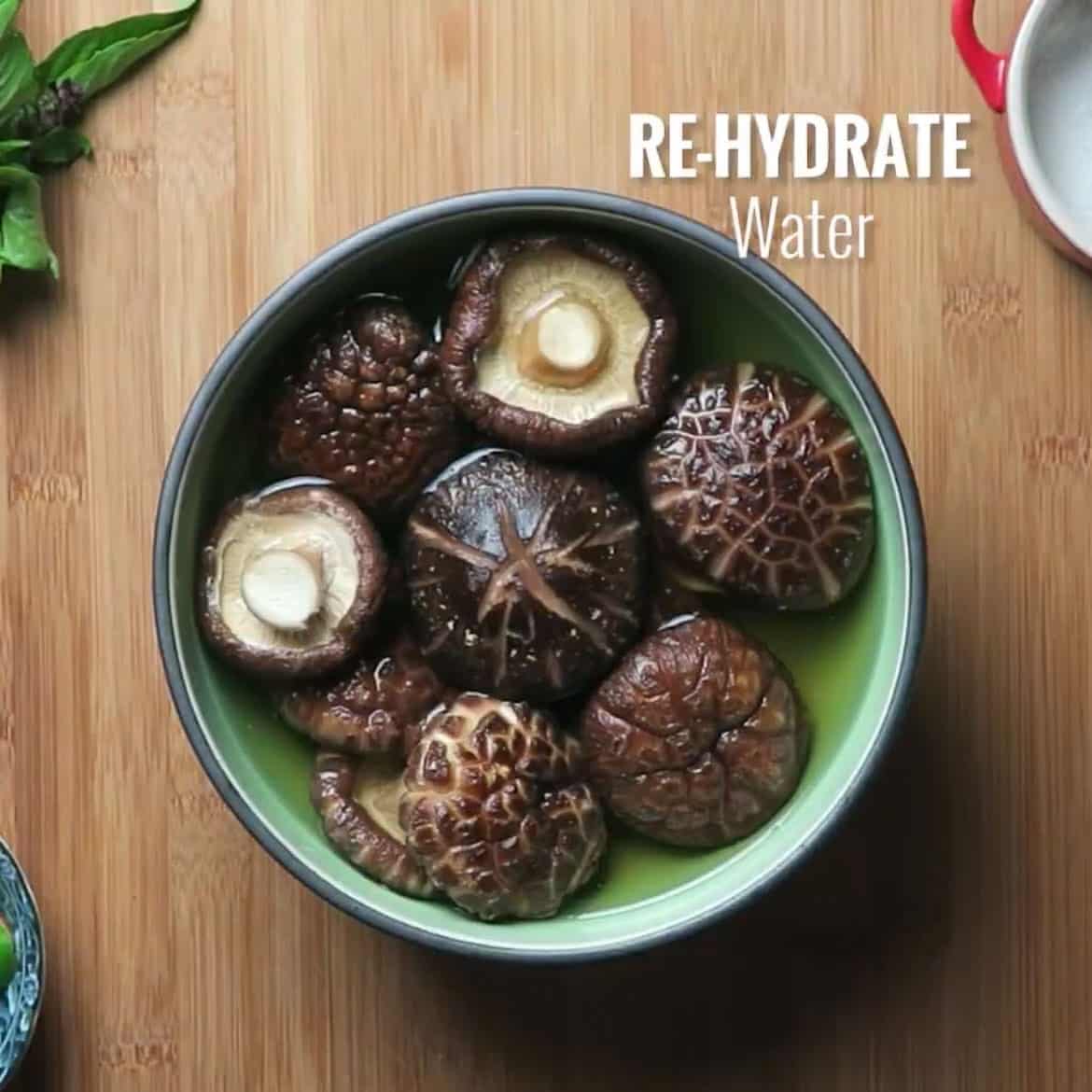
- Soaking Setup: Grab a large bowl or a soup Tupperware container. Place your dried shiitake in it and fill it up with room temperature water, right to the top.
- Mushroom Placement: Make sure the mushrooms are stem-side down in the water. The stems are thicker and need more time to soak up the water.
- Soaking Time: Cover the bowl lightly with saran wrap and let the mushrooms soak. Leave them overnight or for at least 6-8 hours to rehydrate and release their flavor.
- Location Based on Temperature: In summer, put the bowl in the fridge or a cool, shaded spot in the kitchen. In colder weather, leaving it on the kitchen counter works fine.
- Tip 1: You’ll know they’re fully rehydrated when they feel plump, spongy, and squishy, with no hard or dry spots. They should almost double or triple in size.
- Tip 2: Generally, use 1 cup of room temperature water for 4 medium-caps or 3 large-caps of dried shiitake. Aim for a bit more water than mushrooms.
- Tip 3: Avoid hot water for soaking, especially for higher-quality mushrooms with thicker caps. Hot water might seem quicker but can leave parts of the mushrooms hard and chewy.
III. After soaking/rehydrated
Don’t throw away the mushroom water – it’s like liquid gold! Here’s what to do after your mushrooms are rehydrated:
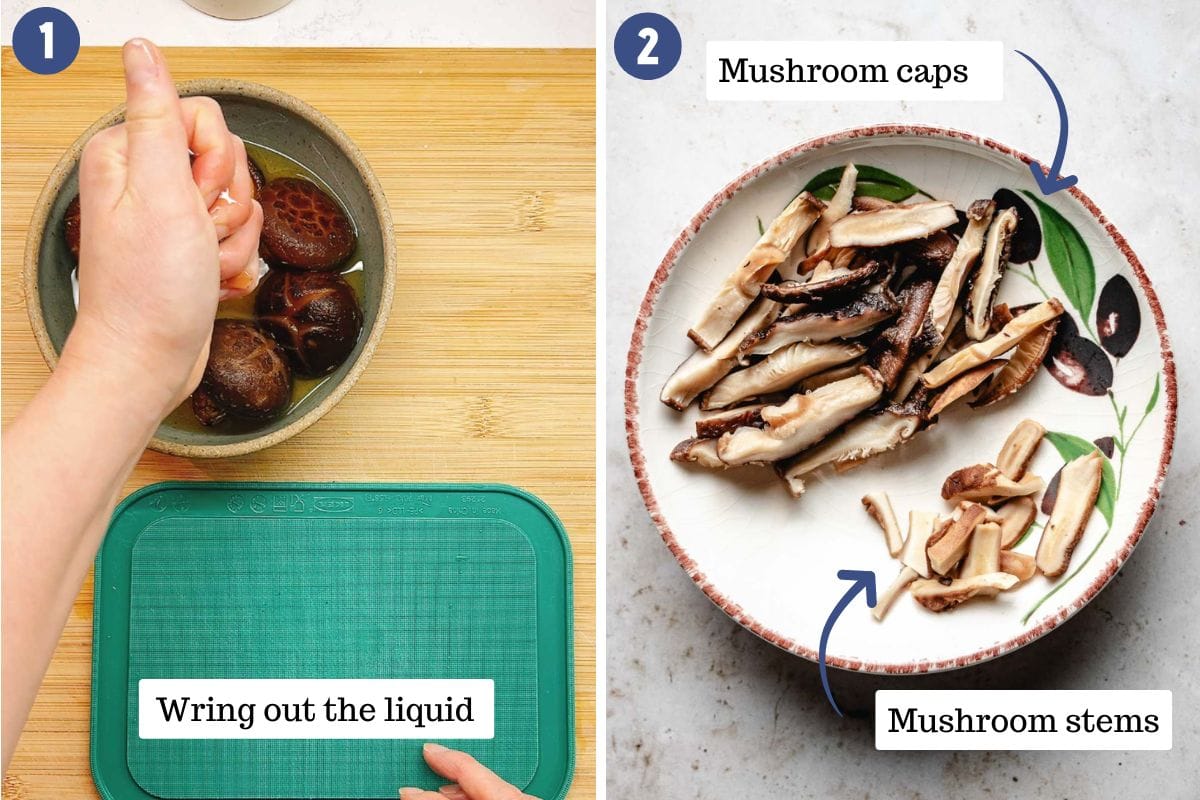
- Handle the Mushrooms: Gently squeeze the mushrooms to wring out the liquid.
- Prep the Mushrooms: Snip off the tip of the stem and discard. Separate the stems from the caps. Slice the caps to your desired thickness and shred the stems into thin strips. Both parts are edible and delicious.
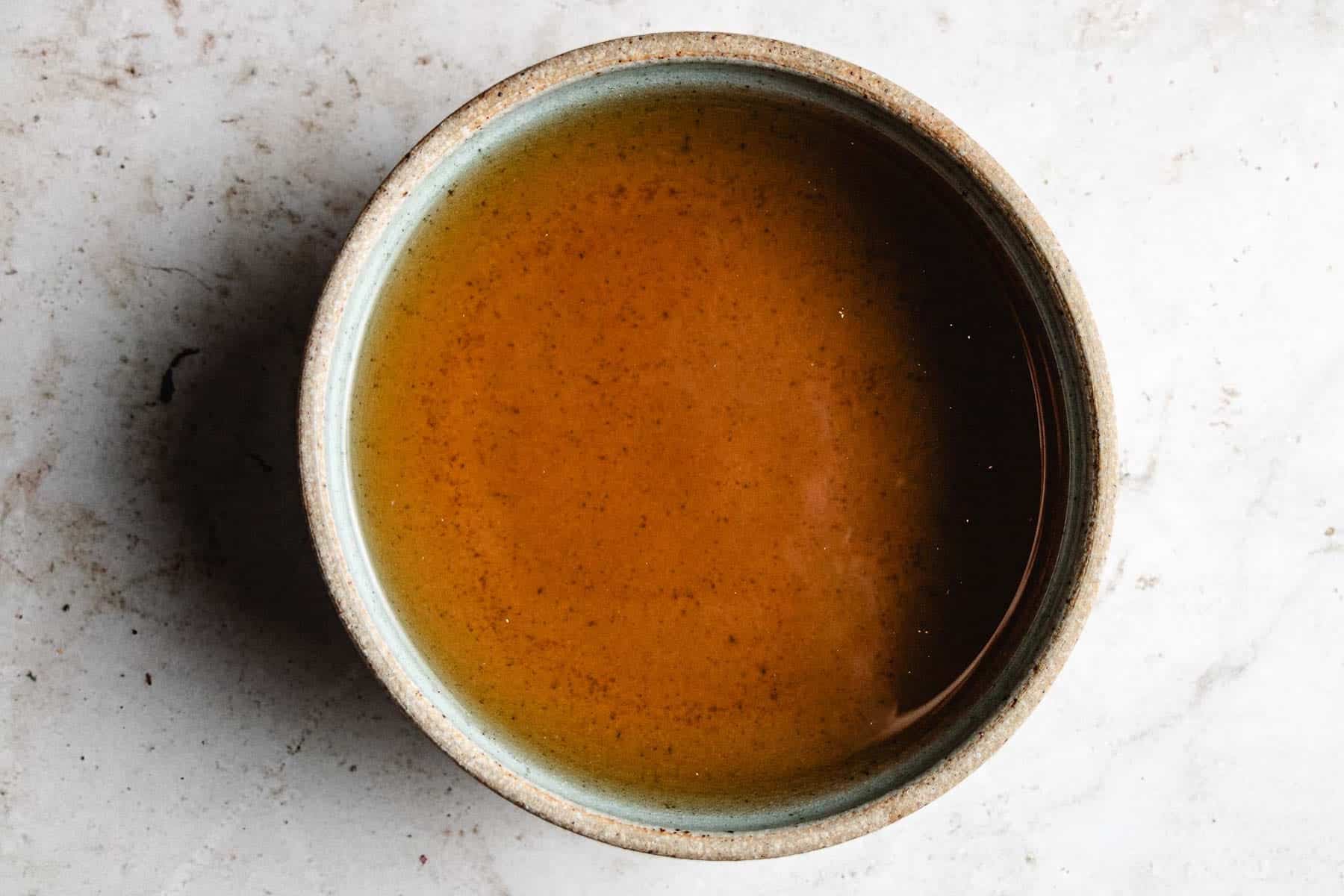
- Strain the Liquid: Pour the mushroom water through a sieve to remove any grit. This stock is perfect for cooking.
Extra Tip: Contrary to popular belief, shiitake mushroom stems are edible. In Taiwanese vegetarian cuisine, for example, chefs shred these stems for stir-fries, creating a great meat-like texture.
How to cook dried shiitake mushrooms
Once your shiitake mushrooms are nicely rehydrated, they’re ready to star in all sorts of dishes! You can add them to stir-fries, stews, soups, roasts, or even simmer them to perfection. Just remember, eating them raw is a no-go – they need to be cooked to bring out their best flavors and textures.
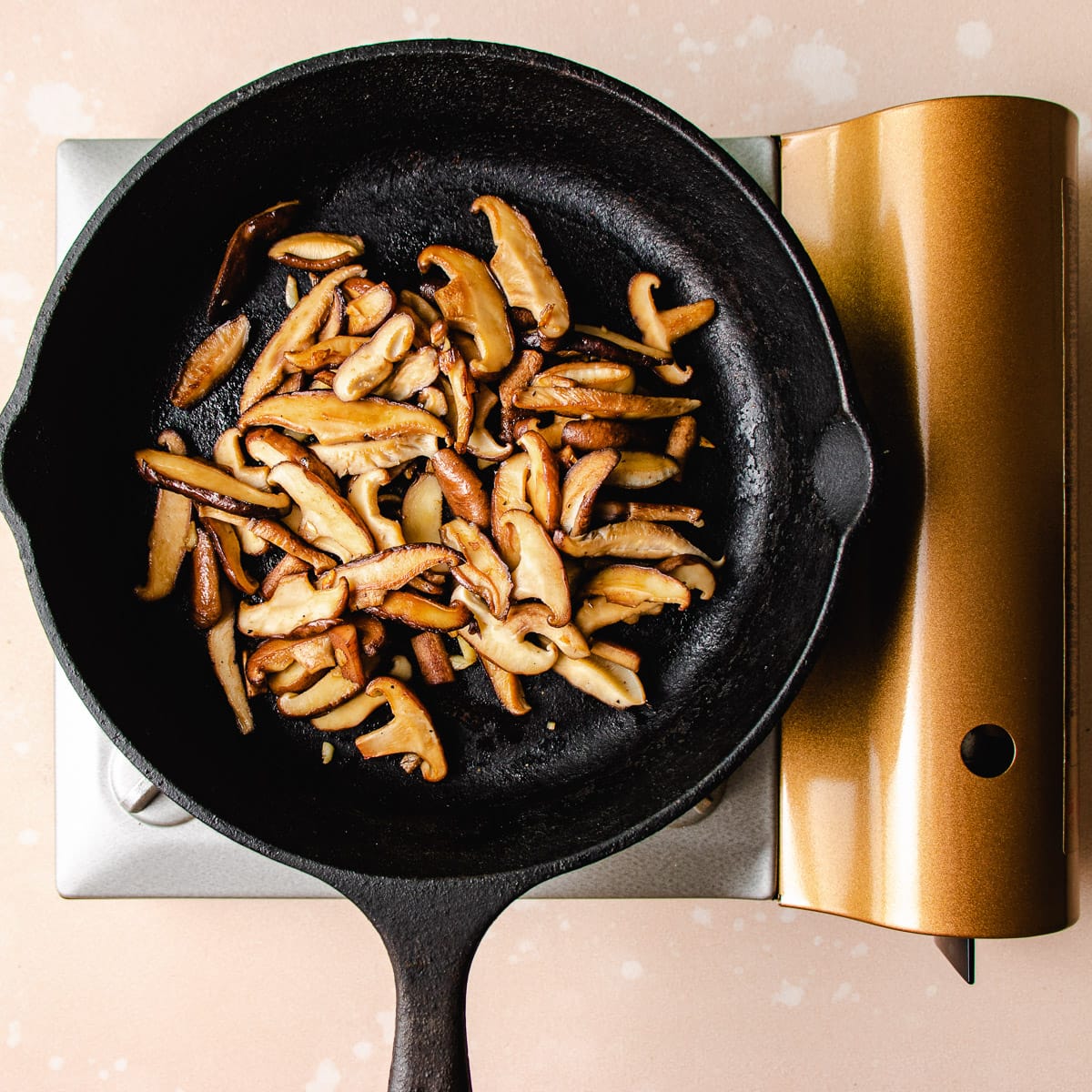
I. Measure by weight
For the most accurate results, especially when a recipe requires an exact amount of mushrooms, use a food scale. Recipes should specify whether they mean dried or rehydrated mushrooms and give the quantity by weight.
As you get more familiar with the dish, feel free to eyeball the amount. Love that earthy, woodsy flavor? Toss in a few extra mushrooms. Prefer a subtler taste? Use a bit less.
Remember, always use fully rehydrated mushrooms for the best texture and flavor. It’s not recommended to cook them dry, even in soups – they need that soaking time to plump up and develop their full taste.
II. How long to cook shiitake mushrooms
The cooking time for shiitake mushrooms varies based on how they’re sliced, the amount used, and your cooking method. Thin strips might take around 8-10 minutes to sauté on the stovetop, while whole caps could need about 30 minutes to simmer in soup.
A handy way to judge if they’re done is by their appearance. The mushrooms will start to look slightly translucent, and you might see little beads of liquid on their surface (like they’re sweating). They should feel spongy and juicy when you bite into them, with no hard or dry spots. If you’re unsure, just take a little taste test!
Substitute dried shiitake mushroom for fresh
Sometimes, you might find yourself in a situation where you need to use fresh shiitake mushrooms instead of dried ones. Don’t worry; the conversion is pretty straightforward, and I’ll guide you on when it’s best to use each type.
The Conversion Ratio: The general rule for substituting dried shiitakes for fresh is a 1:5 ratio.
For instance, if a recipe calls for 20 grams of dried shiitake before reconstitution, you’d need about 100 grams of fresh shiitake to match it.
Fresh shiitake vs. Dry shiitake (When to use what?)
- Characteristics of Fresh Shiitake: Fresh shiitake mushrooms tend to have thinner caps and a lighter flavor. They’re also less meaty in texture, making them ideal for dishes where you want a subtle mushroom presence.
- Characteristics of Rehydrated Dry Shiitake Mushrooms: Once rehydrated, dried shiitake mushrooms boast thicker caps, a more intense woodsy and umami flavor, and a meatier texture. They’re perfect for dishes where you want a bold mushroom flavor to shine through.
- Choosing for Your Dish: Use fresh shiitake for dishes that call for a lighter mushroom flavor. Opt for dried shiitake when your dish needs a deep, concentrated umami kick.
- Cooking Time Considerations: Fresh shiitake mushrooms, being less dense and more moisture-rich, generally cook faster than their rehydrated counterparts. So, when using rehydrated dried shiitake, you might need to increase the cooking time a bit to achieve the perfect texture.
Make ahead and storage tips
Dried shiitake mushrooms, with their overnight soaking requirement, are perfect for make-ahead meal prep. Let’s break down the best practices for both making ahead and storing these culinary gems.
- Make-ahead: Get a jump start on your cooking by soaking the dried shiitake ahead of time. Just place them stem-side down in a large bowl and fill it up with room-temperature water. Remember the ratio: about 1 cup of water for every 4 medium-caps (or 3 large-caps) of dried shiitake. Let them soak overnight, and they’ll be ready to go when you are!
- How long are dried mushrooms good for:
- Shelf Life: Unopened, dried shiitake mushrooms can last for about 3 years in their vacuum-sealed package.
- After Opening: Once you’ve opened the package, transfer any leftover mushrooms to an airtight container. Don’t forget to toss in the silica packets that came with them. These mushrooms don’t need to be refrigerated or frozen – just store the container in a cool, dark spot in your pantry cupboard.
- How long are rehydrated shiitake mushrooms good for:
- Refrigeration: After rehydrating, store the mushrooms along with their soaking liquid in a sealed Tupperware container in the fridge.
- Usage Timeframe: It’s best to use them within one week for optimum flavor and texture.
Recipes you can use
Shiitake mushrooms are a natural powerhouse of monosodium glutamate, making them not just a healthy choice, but also a secret weapon to instantly elevate the flavors in your dishes. Let’s explore various ways to cook with dried shiitake mushrooms once they’ve been perfectly rehydrated:
- Add to Soups:
- Enhance your soup’s depth of flavor by adding rehydrated shiitake mushrooms. They work wonders in soups like Chinese Chicken Soup, giving it a hearty boost, or try them in Hot and Sour Chicken Soup and Bok Choy Soup for an umami-rich experience.
- Simmer in Stews:
- Stews are perfect for showcasing shiitake mushrooms. Simmer them in dishes like Lion’s Head Meatballs for a traditional touch, or include them in a Vegan Hot Pot for a plant-based delight.
- Sauté and Stir-Fry Dishes:
- Shiitake mushrooms bring a savory punch to stir-fries and sautés. Try them in Sauteed Baby Bok Choy with Shiitake or Oyster sauce chicken stir fry with shiitake, blend them with Shanghai Rice Cake with Napa Cabbage and Bok Choy, or mix them into a wide variety of Chinese Vegetables for a simple yet flavorful side.
- Fillings for Dumplings/Wontons:
- Make your dumplings and wontons stand out by adding rehydrated shiitake. They’re a great addition to fillings like those in Rice Paper Dumplings, Rice Paper Egg Rolls, Shrimp Wontons, and Beef Wonton, offering a unique texture and taste.
- Make Sauce:
- Create a delicious Vegan Oyster Sauce using rehydrated shiitake mushrooms. Their rich flavor makes an excellent base for this versatile and flavorful sauce.
Expert tips
- Selecting Quality Mushrooms: Look for whole dried shiitake with thick, cracked caps. Avoid pre-sliced or thin-capped ones as they lack flavor and texture.
- Proper Rehydration is Key: Always soak dried shiitake mushrooms overnight in room temperature water for the best results. This ensures they fully rehydrate and develop a plump, juicy texture.
- Water Ratio for Soaking: Use about 1 cup of water for every 4 medium or 3 large shiitake caps. Ensure the mushrooms are submerged with their stems facing down.
- Avoid Hot Water for Soaking: Hot water can lead to uneven rehydration and a chewy texture. Stick to room temperature water for soaking.
- Save the Soaking Liquid: Don’t discard the liquid used for soaking the mushrooms. It’s packed with flavor and makes an excellent base for soups and sauces.
- Cooking Time Varies: The cooking time for shiitake mushrooms depends on their size and the cooking method. Thin slices may need around 8-10 minutes of sautéing, while whole caps could require 20-30 minutes in soups or stews.
- Checking for Doneness: Shiitake mushrooms are cooked when they turn slightly translucent and feel spongy and juicy. Avoid overcooking to maintain their texture.
- Use in a Variety of Dishes: Experiment with adding rehydrated shiitake to soups, stews, stir-fries, dumpling fillings, and even sauces for an umami boost.
- Storing Leftovers: Store any leftover dried mushrooms in an airtight container with silica packets in a cool, dark place. Rehydrated mushrooms should be kept in the refrigerator and used within a week.
- Substituting Fresh for Dried: Remember the conversion ratio of 1:5 when substituting fresh shiitake for dried. Fresh mushrooms are best for lighter-flavored dishes, while dried ones are ideal for rich, umami-packed recipes.
FAQs
Dried shiitake mushrooms offer a more concentrated umami flavor and meatier texture compared to fresh, enhancing the depth and richness of various dishes.
No, dried shiitake mushrooms should be rehydrated and cooked before eating to ensure they are digestible and to bring out their full flavor and texture.
The best way is to first rehydrate dried mushrooms overnight in room temperature water, then cook them in your chosen recipe, like stir-fries, soups, or stews.
Cooking time varies; thin slices need 8-10 minutes of sautéing, while whole caps may require 20-30 minutes in soups or stews until they’re tender and flavorful.
More shiitake mushroom recipes
I hope you find this article helpful and gives you more confidence in learning how to prepare dried shiitake mushrooms. Here are a few more ways to help you incorporate shiitake into everyday cooking. Give them a try and let me know what you think!
- Chicken Cabbage Stir Fry: Juicy chicken breasts mingle with sweet napa cabbage and shiitake mushrooms, creating a flavorful and healthy stir-fry sensation.
- West Lake Beef Soup: Savor the richness of ground beef, soft tofu, and woodsy shiitake mushrooms in a delightful savory mushroom broth—a heartwarming classic.
- Asian Chicken Noodle Soup: Elevate your soup game by adding shredded, cooked chicken, noodles, and shiitake mushrooms, instantly enhancing the soup’s depth of flavor.
- Brisket pho: an instant pot recipe with tender brisket, shiitake mushrooms, and fresh herbs. The broth is made from soaking dried shiitake.
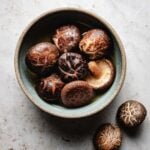
Recipe guide on how to cook dried shiitake mushrooms
Ingredients
Ingredients:
- 8 pieces Whole Dried Shiitake Mushrooms
- 2 cups Room Temperature Water
Tools:
- A Large Bowl or Container
- A Sieve or Strainer
- A Knife and Chopping Board
Instructions
Rehydrating Dried Shiitake Mushrooms:
- Soaking the Mushrooms: Place the dried shiitake mushrooms in the bowl. Pour enough room temperature water over the mushrooms to completely submerge them. The general guideline is about 1 cup of water for 4 medium-sized or 3 large shiitake caps.
- Arrange the mushrooms with stems facing downwards as they take longer to rehydrate.
- Soaking Time: Cover the bowl lightly and soak the mushrooms overnight, or for at least 6-8 hours. If soaking in warmer weather, place the bowl in the refrigerator; otherwise, leave it in a cool, shaded area of your kitchen.
- After Soaking: Once the mushrooms are fully rehydrated, they will be plump and have a spongy texture. Gently squeeze the mushrooms to remove excess water.
- Save the broth: Use a sieve or strainer to drain the mushrooms, reserving the soaking liquid for cooking.
- Slice shiitake: Trim off the stem ends and slice the caps to your desired thickness and shred the stems into thin strips. Both parts are edible and delicious.
General Cooking Time for Rehydrated Shiitake Mushrooms:
- Method of Cooking: The cooking time for rehydrated shiitake mushrooms varies depending on the method used (e.g., sautéing, simmering, roasting).
- Sautéing: For sautéing thinly sliced mushrooms, cook for about 8-10 minutes on medium heat until they are tender and slightly browned.
- Simmering or soup: When simmering whole caps in soups or stews, allow about 30 minutes of cooking time.
- Checking for Doneness: The mushrooms should turn slightly translucent with small beads of liquid on the surface.
- Texture: They should have a spongy, juicy texture without any hard or dry spots. Taste testing is always a good way to check for the right texture.
Notes
- Do you need to clean dried shiitake mushrooms? If you’ve chosen good quality mushrooms, they’re likely packed in vacuum-sealed packages, keeping them clean and dust-free. So, no need to rinse or wash them before soaking.
- Where to buy good quality dried shiitake? Your local Chinese, Japanese, or Korean grocery stores will be the best place to go. Good quality shiitake mushrooms are typically vacuum-sealed. This keeps them fresh and clean.
- How to select good-quality dried shiitake? Go for Whole Dried Shiitake. Look for mushrooms with lots of cracks (known as fissures) on the caps. More fissures mean the mushrooms will be extra thick, meaty, and juicy once they’re rehydrated. For everyday home cooking, look for mid-range priced dried shiitake mushrooms, about $15-20 per pound. This price range usually offers good quality without costing a fortune.
Nutrition
Made a dish and love it? Please remember to rate the recipe and leave a comment in the comment section below! It helps my blog grow organically so I can continue sharing free and awesome content with you. Thank you!


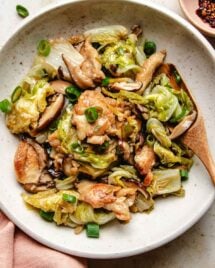

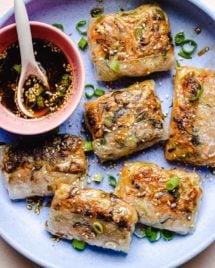
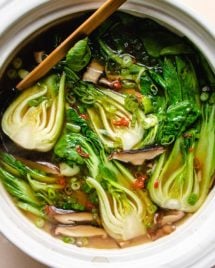



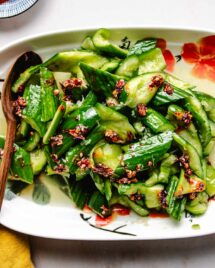
Thanks for this incredibly helpful article on Shitake! I learned a lot, and I’ve been cooking with Shitake for over 30 years!
Aww thank you. I’m flattered. 🙂
Dear ChihYu, thank you, thank you, thank you, for this absolutely amazing article on dried shiitake mushrooms. I have used dried mushrooms before in little packages, however, I really wanted some shiitake and ordered a large package of them from Amazon. You might be amused to know that when I first soaked them (the recipe I was following suggested only 30 minutes), the water was so brown that I panicked & did not know what to do. Sadly, I did not end up using them. After reading your incredibly explicit article & wonderful photography, I now know that the mushrooms that I have are top of the line. So, I am very grateful & feeling so happy!!! Can’t wait to make one of your (always) wonderful recipes with shiitakes now. I also wish to specifically thank you for the way that you send your e-mails, as I get so frustrated with receiving e-mails that say recipe 1, recipe 2, etc., which I now mostly just delete. I appreciate you so much & you are one of my top sites to follow, simply because you, ChihYu, are a top Chef!!!
HI Audrey, thank you so much, I’m very happy to share and thank YOU for taking the time to read the article. I absolutely love using dried shiitake. They are very healthy, too!